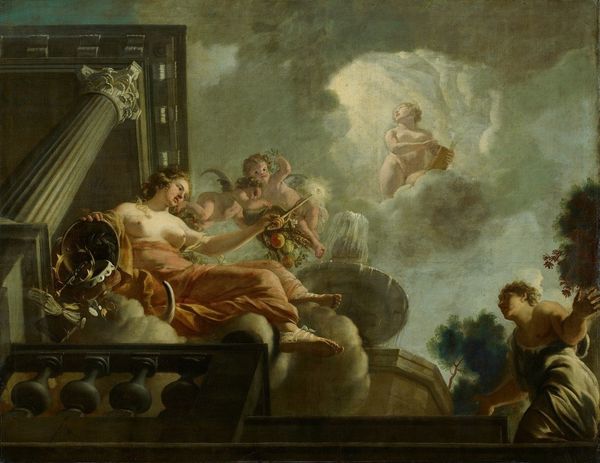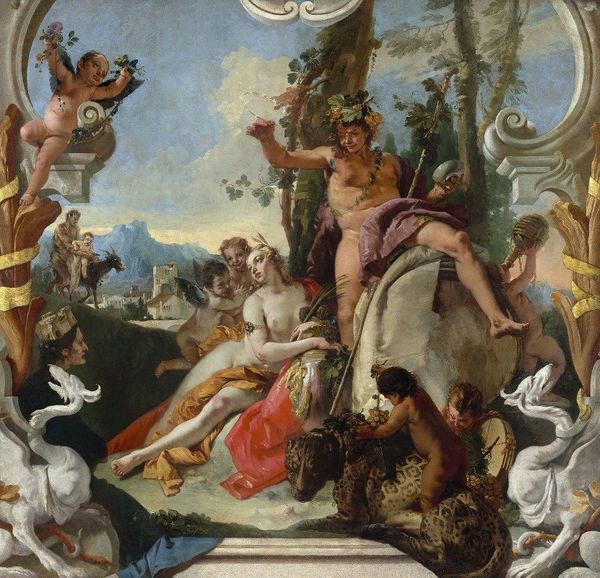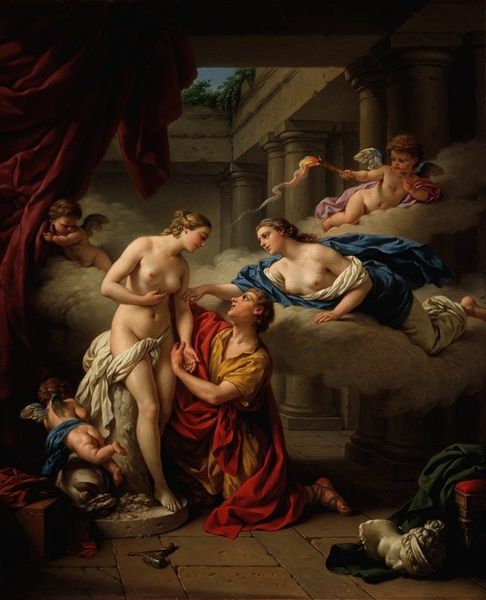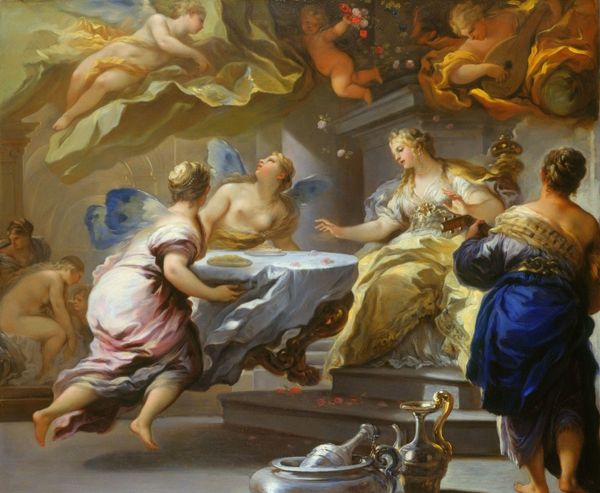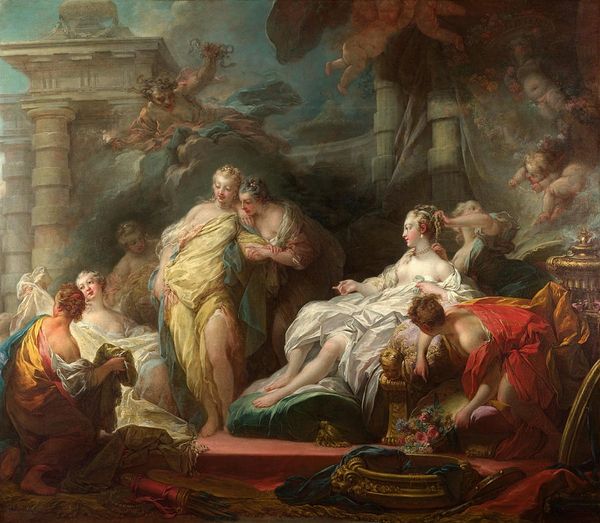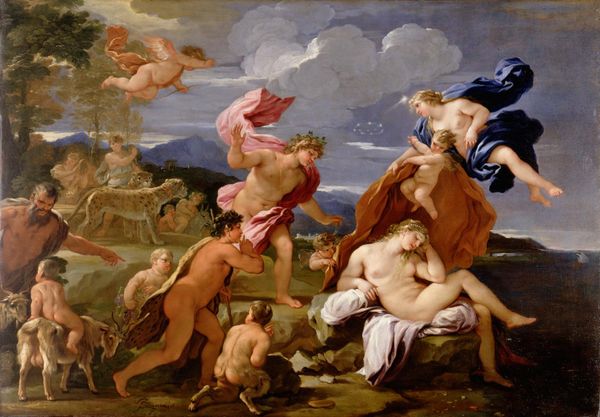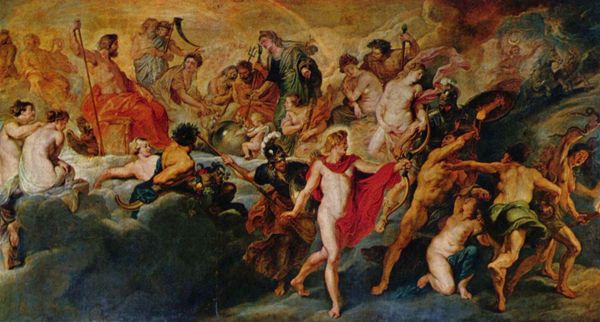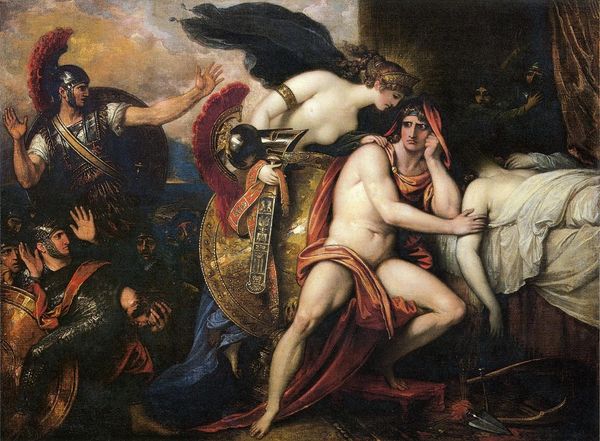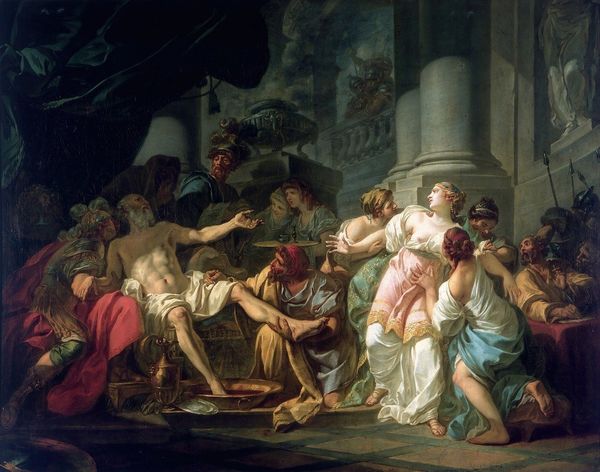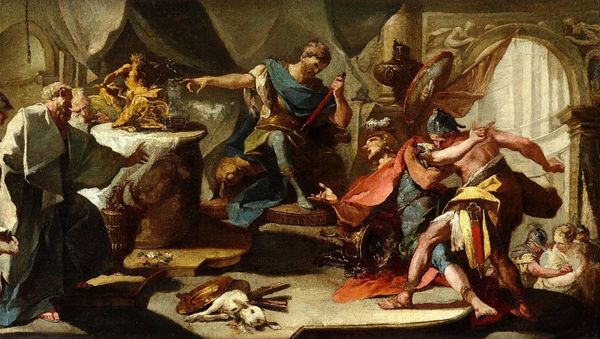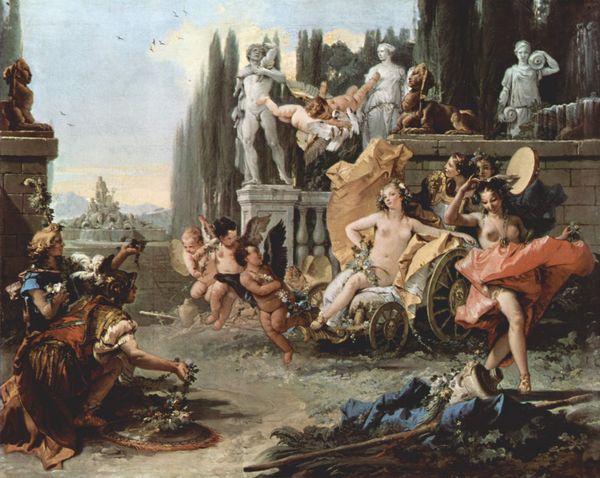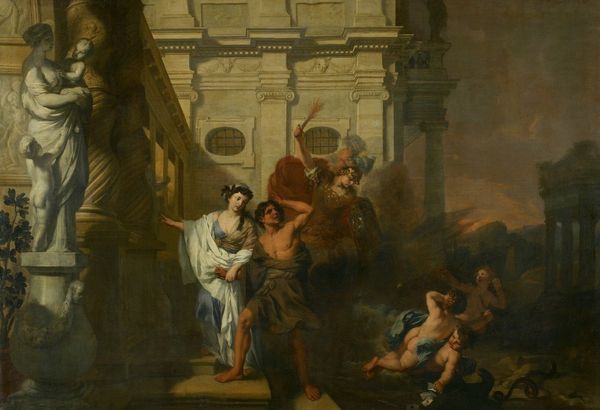
painting, oil-paint
#
water colours
#
allegory
#
baroque
#
painting
#
oil-paint
#
painted
#
figuration
#
roman-mythology
#
underpainting
#
mythology
#
history-painting
#
watercolor
#
rococo
Dimensions: 41 x 53 cm
Copyright: Public domain
Curator: Oh, wow. Looking at this "Jupiter and Danae" piece by Tiepolo—it just shimmers, doesn’t it? There's something so light and airy about the composition. Editor: It does invite contemplation, doesn't it? Knowing Tiepolo painted this in 1736 places it firmly in the Rococo period, a time of opulence and softened Baroque forms. But beneath the beauty, it's dripping, quite literally, with the currency of power and patriarchal structures. Curator: Tell me more about this from your perspective, because my eye is first drawn to that moment of divine intervention. The gold raining down on Danae is painted in such a fluid and evocative style! Almost like liquid light. Does that resonate or clash with your take? Editor: The showering gold definitely highlights the commodification of Danae. It is a brutal depiction of power dynamics where she's reduced to an object, and even that chubby little cupid seems more like an accountant than a harbinger of love, tallying the divine transaction! We have to read between the lines and think critically about this mythological moment. How often are women centered in these historical renderings with the same nuanced and multifaceted representation afforded their male counterparts? Curator: It's difficult for me not to focus on the technique and light. The composition feels dynamic; those diagonal lines really create movement—all those gold coins cascading down. Is there an inherent conflict when we find aesthetic pleasure in depictions that are rife with troubling narratives? Editor: That's precisely where the critical eye comes into play. We can appreciate the artistry without excusing the politics. Understanding the social commentary makes appreciating or challenging Tiepolo's rendering much more meaningful than if you only focus on its artistic merit. The piece acts as a cultural artifact that informs the power structures of the period, both celebrating and, perhaps, unwittingly critiquing them. Curator: This gives me so much to think about. The layering of the gold in contrast to her position feels like a direct critique in hindsight. Now it seems the “shimmering” I first observed carries much more significance, even a disturbing charge of complicity in the structures of power you highlight. Editor: And perhaps that initial aesthetic delight—that's exactly what it was designed to do, even if we as contemporary viewers bring different questions to it. This back-and-forth and new vantage is exactly the type of dialogue artwork like this demands and deserves.
Comments
No comments
Be the first to comment and join the conversation on the ultimate creative platform.
